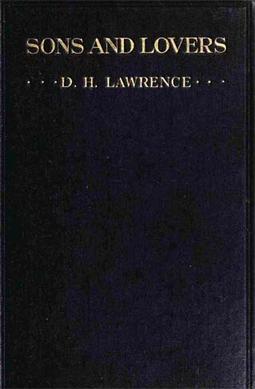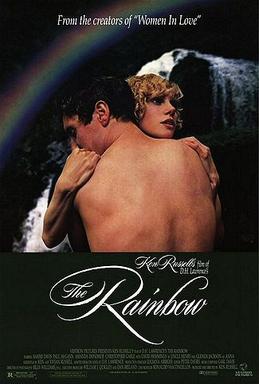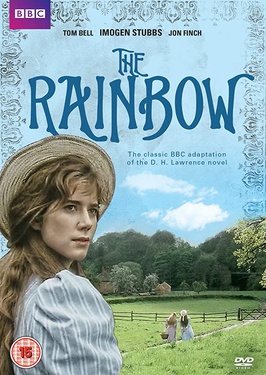
David Herbert Lawrence was an English writer, novelist, short story writer, poet and essayist. His modernist works reflect on modernity, social alienation and industrialization, while championing sexuality, vitality and instinct. Several of his novels, Sons and Lovers, The Rainbow, Women in Love, and Lady Chatterley's Lover, were the subject of censorship trials for their radical portrayals of sexuality and use of explicit language.

Richard Aldington was an English writer and poet. He was an early associate of the Imagist movement. His 50-year writing career covered poetry, novels, criticism and biography. He edited The Egoist, a literary journal, and wrote for The Times Literary Supplement, Vogue, The Criterion, and Poetry. His biography of Wellington (1946) won him the James Tait Black Memorial Prize.

Ford Madox Ford was an English novelist, poet, critic and editor whose journals The English Review and The Transatlantic Review were important in the development of early 20th-century English and American literature.

Sons and Lovers is a 1913 novel by the English writer D. H. Lawrence. It traces emotional conflicts through the protagonist, Paul Morel, and his suffocating relationships with a demanding mother and two very different lovers, which exert complex influences on the development of his manhood. The novel was originally published by Gerald Duckworth and Company Ltd., London, and Mitchell Kennerley Publishers, New York. While the novel initially received a lukewarm critical reception, along with allegations of obscenity, it is today regarded as a masterpiece by many critics and is often regarded as Lawrence's finest achievement. It tells us more about Lawrence's life and his phases, as his first was when he lost his mother in 1910 to whom he was particularly attached. And it was from then that he met Frieda Richthofen, and around this time that he began conceiving his two other great novels, The Rainbow and Women in Love, which had more sexual emphasis and maturity.
This article contains information about the literary persons, events and publications of 1915.

Women in Love is a 1969 British romantic drama film directed by Ken Russell and starring Alan Bates, Oliver Reed, Glenda Jackson, and Jennie Linden. The film was adapted by Larry Kramer from D.H. Lawrence's 1920 novel Women in Love. It was the first film to be released by Brandywine Productions.

Frank Raymond "F. R." Leavis was an English literary critic of the early-to-mid-twentieth century. He taught for much of his career at Downing College, Cambridge, and later at the University of York.

Women in Love (1920) is a novel by English author D. H. Lawrence. It is a sequel to his earlier novel The Rainbow (1915) and follows the continuing loves and lives of the Brangwen sisters, Gudrun and Ursula. Gudrun Brangwen, an artist, pursues a destructive relationship with Gerald Crich, an industrialist. Lawrence contrasts this pair with the love that develops between Ursula Brangwen and Rupert Birkin, an alienated intellectual who articulates many opinions associated with the author. The emotional relationships thus established are given further depth and tension by an intense psychological and physical attraction between Gerald and Rupert.
Catherine Roxburgh Carswell was a Scottish author, biographer and journalist, now known as one of the few women to take part in the Scottish Renaissance. Her biography of the Scottish poet Robert Burns aroused controversy, but two earlier novels of hers, set in Edwardian Glasgow, were little noticed until their republication by the feminist publishing house Virago in 1987. Her work is now seen as integral to Scottish women's writing of the early 20th century.
Gilbert Eric Cannan was a British novelist and dramatist.
David Kenneth Holbrook was a British writer, poet and academic. From 1989 he was an Emeritus Fellow of Downing College, Cambridge.
The Cambridge Edition of the Letters and Works of D. H. Lawrence is an ongoing project by Cambridge University Press to produce definitive editions of the writings of D. H. Lawrence. It is a major scholarly undertaking that strives to provide new versions of the texts as close as can be determined to what the author intended.
Queenie Dorothy Leavis was an English literary critic and essayist.

The Plumed Serpent is a 1926 political novel by D. H. Lawrence; Lawrence conceived the idea for the novel while visiting Mexico in 1923, and its themes reflect his experiences there. The novel was first published by Martin Secker's firm in the United Kingdom and Alfred A. Knopf in the United States; an early draft was published as Quetzalcoatl by Black Swan Books in 1995. The novel's plot concerns Kate Leslie, an Irish tourist who visits Mexico after the Mexican Revolution. She encounters Don Cipriano, a Mexican general who supports a religious movement, the Men of Quetzalcoatl, founded by his friend Don Ramón Carrasco. Within this movement, Cipriano is identified with Huitzilopochtli and Ramón with Quetzalcoatl. Kate eventually agrees to marry Cipriano, while the Men of Quetzalcoatl, with the help of a new president, bring about an end to Christianity in Mexico, replacing it with pagan Quetzalcoatl worship.
Saskia Reeves is an English actress, best known for her roles in the films Close My Eyes (1991) and I.D. (1995), the 2000 miniseries Frank Herbert's Dune and the 2016 film Our Kind of Traitor.
John Casey is a British academic and a writer for The Daily Telegraph. He has been described as "mentor" to Roger Scruton and is a former lecturer in English at the University of Cambridge and a former lecturer and a Life Fellow of Gonville and Caius College, Cambridge. In 1975, along with Scruton, he founded the Conservative Philosophy Group. Though not a member of Peterhouse, he has been considered part of the Cambridge Right, which included scholars from Selwyn College, Gonville and Caius College and Christ's College as well. He was editor of The Cambridge Review between 1975 and 1979.

The Rainbow is a 1989 British drama film co-written and directed by Ken Russell and adapted from the D. H. Lawrence novel The Rainbow (1915). Sammi Davis stars as Ursula, a sheltered young pupil, then schoolteacher, who is taken under the wing by the more sophisticated Winifred.

Ursula is a feminine given name in several languages. The name is derived from a diminutive of the Latin ursa, which means "bear". The name has been rather uncommon in the English-speaking world, although its use has been influenced since the twentieth century by the Swiss-born actress Ursula Andress.

Women in Love is a British two-part television film, a combined adaptation by William Ivory of two D. H. Lawrence novels, The Rainbow (1915) and Women in Love (1920). Directed by Miranda Bowen and produced by Mark Pybus, it features Saskia Reeves, Rachael Stirling, Rosamund Pike, Rory Kinnear, Joseph Mawle and Ben Daniels. It was first transmitted on BBC Four on 24 and 31 March 2011. It was made by Company Pictures and filmed in South Africa. Other cast members included Ben Daniels as Will Brangwen. Music by Chris Letcher.

The Rainbow is a BBC television three-episode serial of 1988 directed by Stuart Burge, adapted from the D. H. Lawrence novel The Rainbow (1915).












